Home »
Misc »
How do you win in basketball
How do you win in basketball
Basketball Rules: How To Play Basketball
Photo credit: Keith Allison (Source)
Basketball dates back as far as 1891 and since then has evolved into a sport played around the world. Many countries have adopted the game such as Russia, Great Britain, Germany, Spain and parts of Asia, but it is America where the biggest and most lucrative league in the world lives: the NBA (National Basketball Association).
Object of the Game
The object of basketball is to throw the ball (basketball) into a hoop to score points. The game is played out on a rectangular court and depending on which section of court you successfully throw a ball into the basket will depend on how many points are scored. The ball can be moved around the by dribbling or passing the ball. At the end of the game the team with the most points is declared the winner.
Players & Equipment
Each team is made up of 12 players with only 5 allowed on the court at any time. The positions are broken up into Point Guard, Defensive Guard, Center, Offensive forward and Defensive Forward.![]() Each player will then take up a position on the court but are allowed to move around as they please.
Each player will then take up a position on the court but are allowed to move around as they please.
The court is a rectangular shaped and measures 91 feet long and 50 feet wide. There is a halfway line in which a small circle is found in the centre; this is where the game starts with a tip off (the ball is thrown in the air by the referee and a player from each team tries to win possession for their team). At each end of the court are two baskets both 10 feet in height. A three point arc is the outside ring, whilst in the middle of that is the key which includes a free throw line.
All that is needed to play is a court and basketball. Teams must wear matching strips with some players choosing to wear gum shields and face masks for protection.
The game is split up into 4 twelve minute quarters. In between the 2 nd and 3rd quarter is a 15 minute half time interval.
Scoring
There are three scoring numbers for basketball players. Any basket scored from outside the three point arc will result in three points being scored.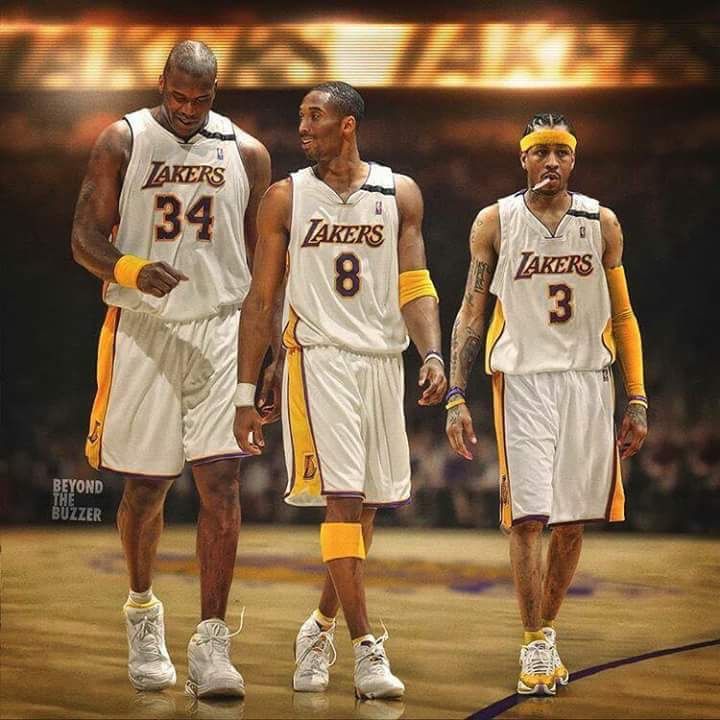 Baskets scored within the three point arc will result in two points being scored. Successful free throws will result in 1 point being scored per free throw. The number of free throws will depend on where the foul was committed.
Baskets scored within the three point arc will result in two points being scored. Successful free throws will result in 1 point being scored per free throw. The number of free throws will depend on where the foul was committed.
Winning the Game
Winning a game of basketball is pretty simple; score more points than your opponents in the allotted game time. If the scores are tied at the end then an extra quarter will be played until a winner is found.
Rules of Basketball
- Each team can have a maximum of 5 players on the court at any one time. Substitutions can be made as many times as they wish within the game.
- The ball can only be moved by either dribbling (bouncing the ball) or passing the ball. Once a player puts two hands on the ball (not including catching the ball) they cannot then dribble or move with the ball and the ball must be passed or shot.
- After the ball goes into a team’s half and they win possession back the ball must then make it back over the half way line within 10 seconds.
 If the ball fails to do so then a foul will be called and the ball will be turned over.
If the ball fails to do so then a foul will be called and the ball will be turned over.
- Each team has 24 seconds to at least shot at the basket. A shot constitutes either going in the basket or hitting the rim of the basket. If after the shot is taken and the ball fails to go in the basket then the shot clock is restarted for another 24 seconds.
- The team trying to score a basket is called the offence whilst the team trying to prevent them from scoring is called the defence. The defence must do all they can to stop the offence from scoring by either blocking a shot or preventing a shot from being fired.
- After each successful basket the ball is then turned over to the opposition.
- Fouls committed throughout the game will be accumulated and then when reached a certain number will be eventually be awarded as a free throw. A free throw involves one playerfrom the offensive team (the player fouled) to take a shot unopposed from the free throw line.
 Depending on where the foul was committed will depend on the number free throws a player gets.
Depending on where the foul was committed will depend on the number free throws a player gets.
- Violations in basketball include travelling (taking more than one step without bouncing the ball), double dribble (picking the ball up dribbling, stopping then dribbling again with two hands), goaltending (a defensive player interferes with the ball travelling downwards towards the basket) and back court violation (once the ball passes the half way line the offensive team cannot take the ball back over the half way line).
How to play, scoring and all you need to know
One of the most popular sporting disciplines in the world, basketball made its first appearance at the Olympics as a demonstration sport at the 1904 St Louis Games.
At the 1936 Games, basketball was included as a medal event and has been a permanent fixture at the quadrennial sporting showpiece since. Women’s basketball made its Olympic debut in 1976.
For people unfamiliar with the sport, here are the modern-day basketball rules, the regulations, scoring system, positions, and the origin of the sport.
Basketball has been a regular fixture at the Olympics since 1936.
Who invented basketball?
The origin of basketball can be traced to Springfield, Massachusetts in the USA. Dr James Naismith, a Canadian physical instructor working at the YMCA International Training School in Springfield, introduced basketball in 1891.
Instructed to devise an indoor sport to keep the YMCA athletes in shape during the harsh winter months, Naismith came up with a sport involving two peach baskets and a soccer ball with a set of 13 rules.
The first game of basketball was a 9 vs 9 contest according to Naismith’s rule book but over the years, the laws have been changed and fine-tuned to make what we know as modern-day basketball.
Basketball court: Dimensions and markings
To understand basketball, it’s important to have an idea of the court’s layout.
According to FIBA (international basketball federation) guidelines, a basketball court is a rectangular playing area 28m in length and 15m in width.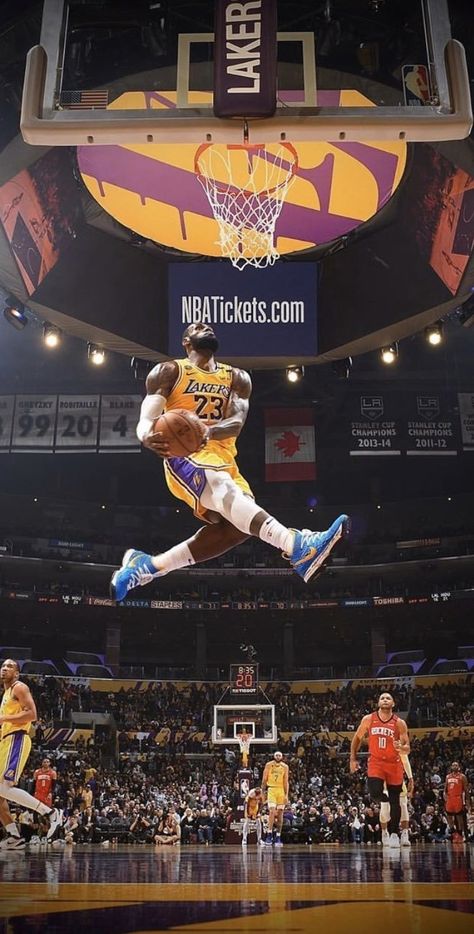 International competitions including the Olympics follow FIBA guidelines.
International competitions including the Olympics follow FIBA guidelines.
The border markings along the length of the court are called sidelines and the breadth of the court are called endlines or baselines.
The key in the basketball court is a rectangular painted area inside the three-point arc.
The outer edge of the key parallel to the endline is called the free-throw line. There’s a 3.6m diameter semi-circle drawn on the outer part of the free-throw line called the free-throw circle.
Basketball rules and sport's regulations
Basketball is a team sport and the game is played between two sides. The core objective in a basketball game is to score points by putting the ball inside the hoop (basket) and to prevent the opposing team from doing the same.
A basketball game starts at the centre of the court when the ball is thrown high up by the referee and one player from each team competing to gain possession. The team that catches the ball, or in possession, is called the offensive team while the team not on the ball is the defensive team.
The team that catches the ball, or in possession, is called the offensive team while the team not on the ball is the defensive team.
The offensive team plays with the intent of getting the ball through the opposition hoop or scoring a field goal after moving the ball around the court by passing or dribbling the ball, abiding by a fixed set of basketball rules.
Basketball points-scoring system
Three-point shot: Shooting and scoring a field goal from anywhere outside the three-point line arc wins the team three points. These are referred to as three-pointers.
Two-point shot: A field goal which is scored from inside the area encircled by the three-point arc in the opposition half is worth two points. These are called two-pointers.
One-point shot: Points can also be accumulated through free-throws, which are worth a point each. Free throws are awarded to a team when the opposition team fouls.
During free throw, the fouled player is allowed a fixed number of shots -- depending on the nature and referee’s interpretation of the foul committed -- at an open basket from anywhere inside the free-throw circle with both his feet behind the free-throw line.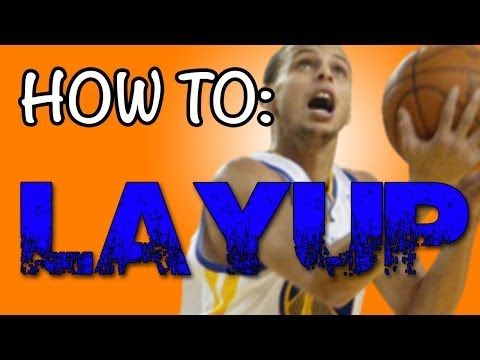
Illegal physical contact or obstructions without the intention of winning the ball by a defender when an offensive player is aiming to shoot is regarded as a foul.
A FIBA sanctioned game typically consists of four quarters of 10 minutes each. After two quarters or half-time, the teams switch sides on the court. The team with more points at the end of the four quarters wins the match. If the score is tied at the end of regulation time, the game can go into an overtime period.
Basketball violations
An offensive player can keep the basketball moving around the court by dribbling or passing the ball to a teammate. In a basketball dribble, a player needs to bounce the ball against the floor continuously using one hand at a time.
Using both hands simultaneously to dribble or touching the ball twice before it bounces once constitutes a double dribble violation, which ends in ceding possession to the opponent team.
Furthermore, if a player stops a dribble completely, they need to pass or shoot the ball.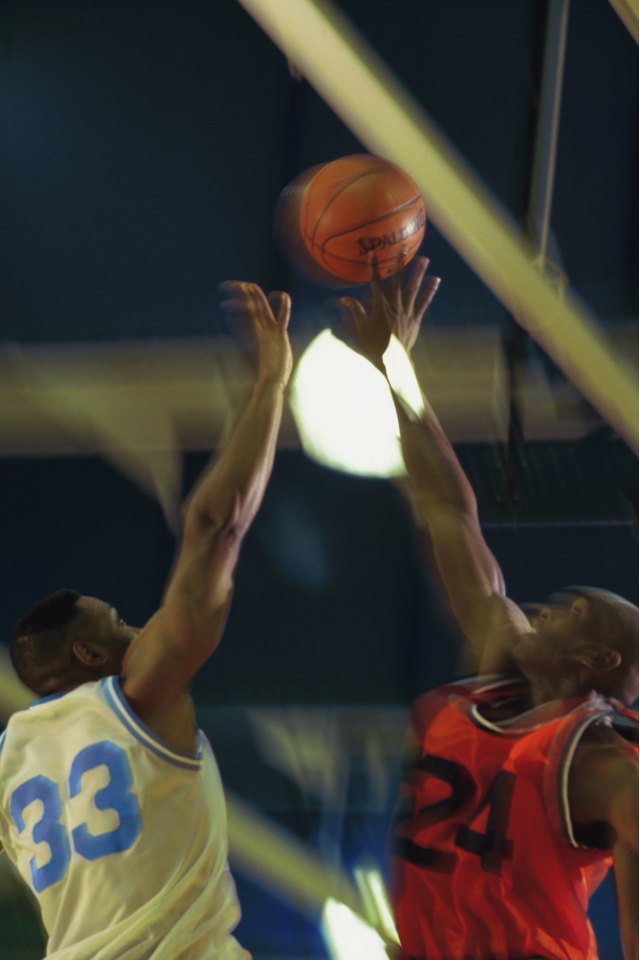 In case they start dribbling the ball again after stopping, it is also considered a double dribble violation.
In case they start dribbling the ball again after stopping, it is also considered a double dribble violation.
While receiving a ball on the move, a player is allowed to take a maximum of two steps before passing, shooting or starting a dribble. Basically, a player is not allowed to run with the ball. Otherwise, they are called for traveling violation, which again results in turning over possession.
If in a stationary position while receiving a ball or after stopping a dribble, a player also needs to establish a pivot foot, on which they need to stay planted in the same spot while swerving or turning until a pass or shot is made.
Players receiving the ball can start a dribble but can’t lift or displace the pivot foot until the ball leaves his hands. Failure to comply results in a traveling violation.
When a team gains possession inside its own half, the players get 10 seconds to move into the opposition half. Once a team crosses into the midline, possession needs to be maintained in the defending team’s half and offensive players cannot go back to their own half. If the ball is passed back, it results in backcourt violation.
If the ball is passed back, it results in backcourt violation.
A defensive player is also not allowed to block or touch the ball when in a downward trajectory towards the basket. This is called goaltending violation.
During an attack, an offensive player isn’t allowed to stay in the opposition key for over three seconds without attempting a shot. It is called the three-second rule and results in lane violation.
Shot Clock
Once a team gains possession of the ball, they are put on a 24-second Shot Clock, which means they have to throw the ball at the hoop or attempt a valid field goal before time runs out.
Failure to do so again results in the possession being turned over to the opposition team.
A Shot Clock stopwatch is typically displayed behind the basket during a basketball game.
How many players in a basketball team
A traditional basketball team has 12 players, with five basketball players on the court at any given time. Unlimited substitutions are allowed.
Unlimited substitutions are allowed.
The five players can be segregated into the following positions:
Point guard: Usually players with the best ball-handling skills and vision in the team play as point guards. A point guard’s primary role is to orchestrate both offensive and defensive plays and set up scoring opportunities for team-mates.
Shooting guard: Typically the best long-range and mid-range shooter in the team. Players patrolling the position constantly look for three-pointers or can help drag defenders out wide to create space near the basket for their team-mates.
Basketball legend Michael Jordan typically played as a shooting guard
Small forward: Playing as a short forward needs a versatile skill set. It requires strength and height as well as speed and dribbling abilities. Mid-range and short-range shooting abilities are also important.
Power forward: A power forward is somewhat similar to a small forward but with a bigger focus on physicality.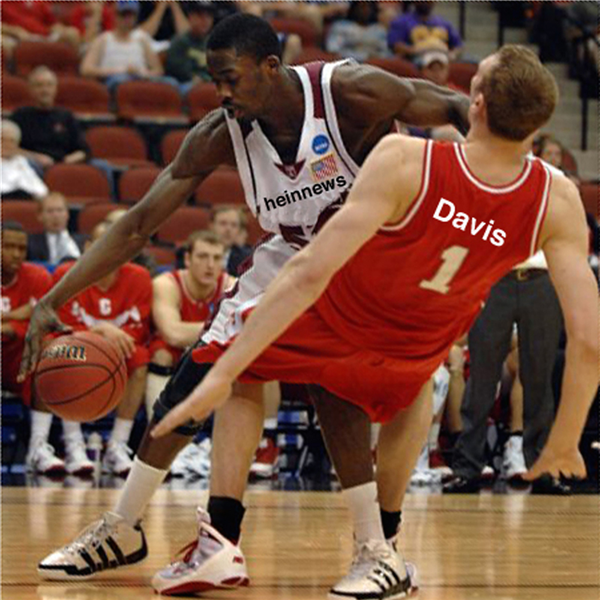 A power forward is usually a foil for the center and are the team’s most dependable scorers from inside the paint.
A power forward is usually a foil for the center and are the team’s most dependable scorers from inside the paint.
Center: Usually the tallest player in the team, a center is required to occupy the space nearest to the basket in both halves. In defence, they are tasked to pick rebounds and block opposition shooters while their offensive duties require them to finish off short-range moves or shield out defenders to allow their team-mates a clean drive at the basket.
NBA, the popular US-based basketball league, also follows similar rules with very minor alterations.
"Basketball 3x3 is a new opportunity for development." From Krasnye Krylya and Superleague-2 to 3x3 basketball - Basketball. 63rd region - Blogs
Editor's note: you are in the Basketball. 63rd Region”, where they talk about Russian basketball and interview its representatives. Subscribe so you don't miss anything.
Dmitry Prikhodko played in the Krasnye Krylia system, then traveled in Superleague-2, and now, together with the Samara team, he is mastering 3x3 basketball.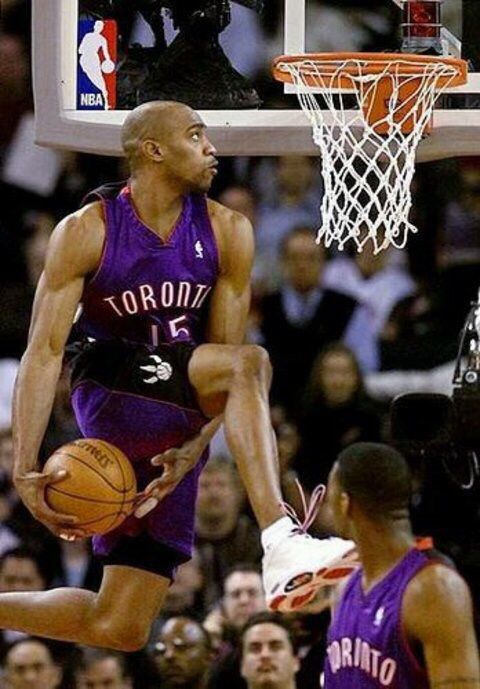
In an interview, he talks about the features of this sport that he felt "from the inside", assesses the team's prospects in the upcoming Russian Cup and recalls his career in "big" basketball.
- You used to often play 3x3 basketball at the amateur level, but could you imagine that one day you would play it professionally?
- There were no such thoughts before. The sport itself was not so developed. But I always came to amateur competitions with pleasure. And over time, I even began to notice that I like 3x3 basketball more than classic basketball: a tougher, more aggressive game - I feel more comfortable here. But to imagine that someday it will be a professional sport, and I would be doing it, of course, I could not. Although when streetball was recognized as an Olympic sport, it became clear where everything was going. And it was noticeable how fast 3x3 basketball is developing.
Some people like contact play, some don't. From the age of 16, when we started playing in the park in Tolyatti, I really enjoyed streetball: there are different emotions, games go one after another, and when you win a strong opponent, it gives a lot of pleasure.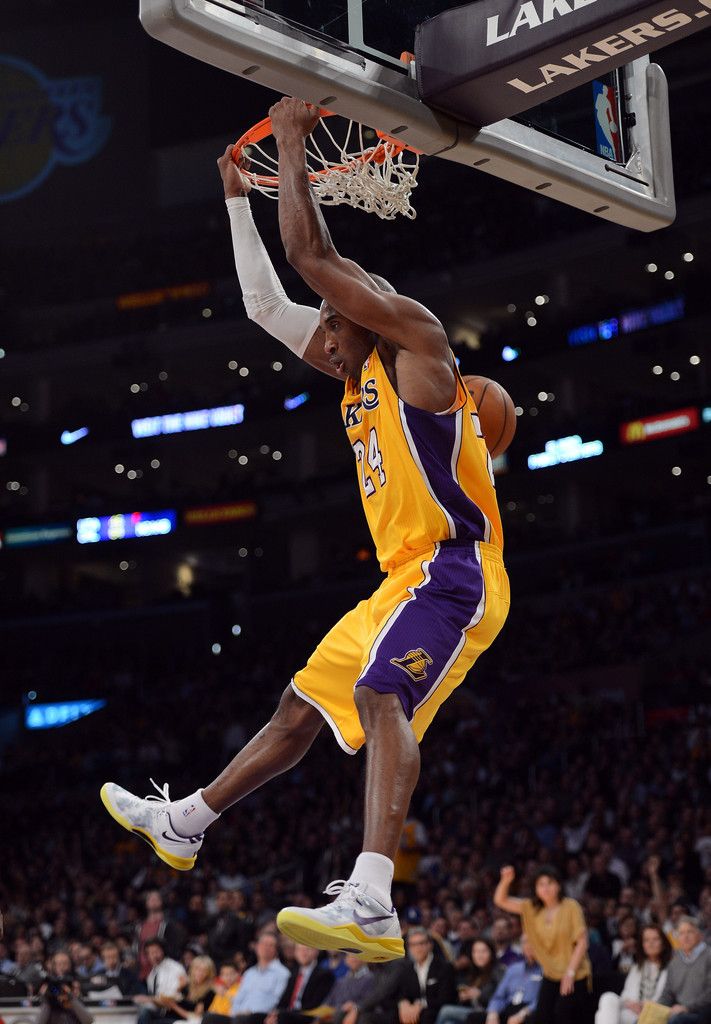 And what else is good about 3x3 basketball - here any team can win: due to dedication, due to the fact that they simply “hit”. The game is short, you need to go out and play at the maximum from the very beginning. Even I had such situations: you go out, get three threes in a row - and immediately start flying 0:6 ... After that, it is already very difficult to return to the game. But this is what 3x3 basketball is interesting for.
And what else is good about 3x3 basketball - here any team can win: due to dedication, due to the fact that they simply “hit”. The game is short, you need to go out and play at the maximum from the very beginning. Even I had such situations: you go out, get three threes in a row - and immediately start flying 0:6 ... After that, it is already very difficult to return to the game. But this is what 3x3 basketball is interesting for.
- When a 3x3 team was created at the club last year, how long did you think about the invitation?
- To be honest, I was a bit skeptical at first. But he agreed: let's start, and then we'll see what happens next. That season was still a trial for the team, we were not required to have any high result, we played, trying to have fun, although, of course, it is difficult to enjoy defeats. We got our first experience. And I realized that I was very interested.
Actually, I became interested already when we went to Voronezh for the first round of the Russian Championship and saw the level of the teams and the organization of the tournament.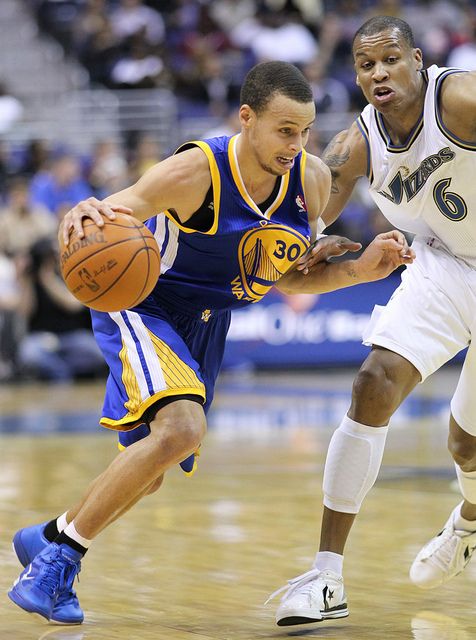 Although we can say that everything happened at the Samara Open last year: foreign teams arrived, and when you play with them, you understand that you can compete with them. Motivation appears: why not try more? At the end of last season, we had a conversation with Kamo Sergeevich, he said that he sees me in the team for this season as well. And I was ready for it.
Although we can say that everything happened at the Samara Open last year: foreign teams arrived, and when you play with them, you understand that you can compete with them. Motivation appears: why not try more? At the end of last season, we had a conversation with Kamo Sergeevich, he said that he sees me in the team for this season as well. And I was ready for it.
“24 minutes in the first match for a new club - and it's the Cup final!”
- In terms of technique and tactics, how difficult was it to get used to the specifics of 3x3 basketball? After all, even the ball is different here.
- Yes, when I picked up this ball for the first time, I thought: it's somehow small... But as soon as you start playing, these thoughts already go away, you forget that the ball is different. And in terms of tactics... Now, probably, we can say that our team still continues to play 5x5 basketball: we mainly try to play from pick-and-roll. And if you look at the top teams that have been playing 3x3 for a long time, they almost don’t play pick-and-roll anymore - they play screens on the weak side and a sharp backlash and break-in, that is, they mainly play from the ball. And we are also moving towards this, working it out in training.
And we are also moving towards this, working it out in training.
When you play with a top team, for example Gagarin, you can't predict the actions of your opponents and sometimes you can't even defend yourself: you just don't know how to play defense correctly. And when you analyze games on video, you see all this - and then you can already change something. This is the same experience that you get through matches.
- And the fact that during the game the team manages without a coach? How in the dynamics of the game, being on the court, to understand what exactly needs to be corrected now?
- It's really difficult at the games in Samara. But at Russian Championship matches you have two TV time-outs, your own time-out, your opponent's time-out – four pauses in the game when you can discuss some points. Of course, it is difficult to make adjustments by playing without pauses. But taking your only timeout at the very beginning, no matter how unsuccessful the game is, is also “dangerous” - it may be necessary in the end.
The absence of a coach - I would not say that this is such a factor. We already know what we must do. And there is no such thing that the coach will change something so much in a short time-out that we will start playing better only due to this. In "big" basketball, the game lasts much longer, you can change tactics several times during the match, thus gaining an advantage. In 3x3 everything happens much faster.
At first it was difficult to adjust to this. Last year, when they watched the video after the stages of the Russian Championship, they understood: yeah, here it was necessary to take a time-out. Now we have more experience, we play with a cooler head, I somehow feel that a pause is needed - oops, a timeout!
Our substitutions mostly occur in a circle. Of course, there are moments when someone is especially tired - then he himself asks for a replacement and sits “out of turn”. It gets hard. There were moments in the European United League when already the first couple of minutes pass so intensely that you need to somehow restore your breath, and you still have to play and play. ..
..
- By the way, was it hard to return to the regime of training and games again?
- I still seem to be coming back. And I just can't get over the weight. He seems to be helping me, I haven’t lost my speed, and it’s easier to get in touch - there is a lot. And in terms of breathing this season, I think everything will work out. In the past, there were few trainings, everything happened so spontaneously ... Now there are more trainings, there are no problems with the halls - now the physical form will need to be put in order.
- In the new season, almost all the guys in the team are seven or eight years younger than you. No relationship problems?
- None! I myself try to create a team atmosphere so that there are no differences in age, interests, or anything else. I took on this role in motivation, team building. In general, I really like the team that we have picked up this season: everyone has ambitions, everyone wants to win.
And most importantly, this team has prospects. We had a good team last year, but in terms of prospects, that squad was worse. Here I am, for example, is unlikely to develop. There is still room to develop in 3x3 tactics - but in individual skill, technique, I may have already stood still: after all, age ... But the guys, Misha Ermilov, Vanya Rebrov, Vlad Karpov, Denis Nikitin - they still have, where to grow. The team looks very good in the future.
- The team has already traveled to Kursk for two rounds of the European United League 3x3. How significant are those matches?
- They are indicative exactly in the sense that we have seen: we need to develop in streetball. I noticed again: while we are playing basketball, in many moments we still cannot reorganize. It was felt that individually we were stronger than some teams, but they took us precisely with “streetball” tactics, in which they are more experienced. Take the Russian top teams: they have been playing with the same line-up for five years - it is difficult to compete with them because of their experience and teamwork.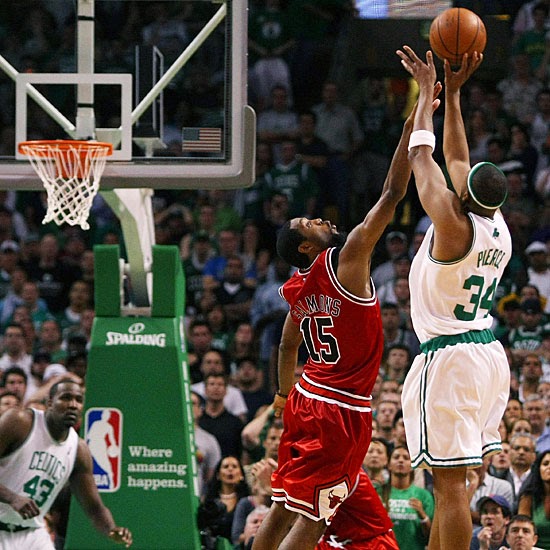 But with all this, we didn’t lose outright to anyone, we had a chance with everyone. Therefore, I am sure that we have good prospects for the future, everything depends on how quickly we adapt and develop.
But with all this, we didn’t lose outright to anyone, we had a chance with everyone. Therefore, I am sure that we have good prospects for the future, everything depends on how quickly we adapt and develop.
- Unlike the rest of the guys, no offense will be said to them, you played a lot on a professional level. You spent several years in the youth team of Krasnye Krylia, but did you have a chance to get into the first team and gain a foothold?
- Some of these contracts, including mine, when a player from the youth team signs a long contract with the main team, I consider a mistake. You want to move from the youth team to the VTB United League - but this is a very high barrier, which can only be overcome by a truly talented player, moreover, with a desire. There are few such players. In order to “shoot”, from the youth team to get to VTB and play there - I don’t even remember such people from the new generation. Only, perhaps, Nizhny Novgorod develops players so well.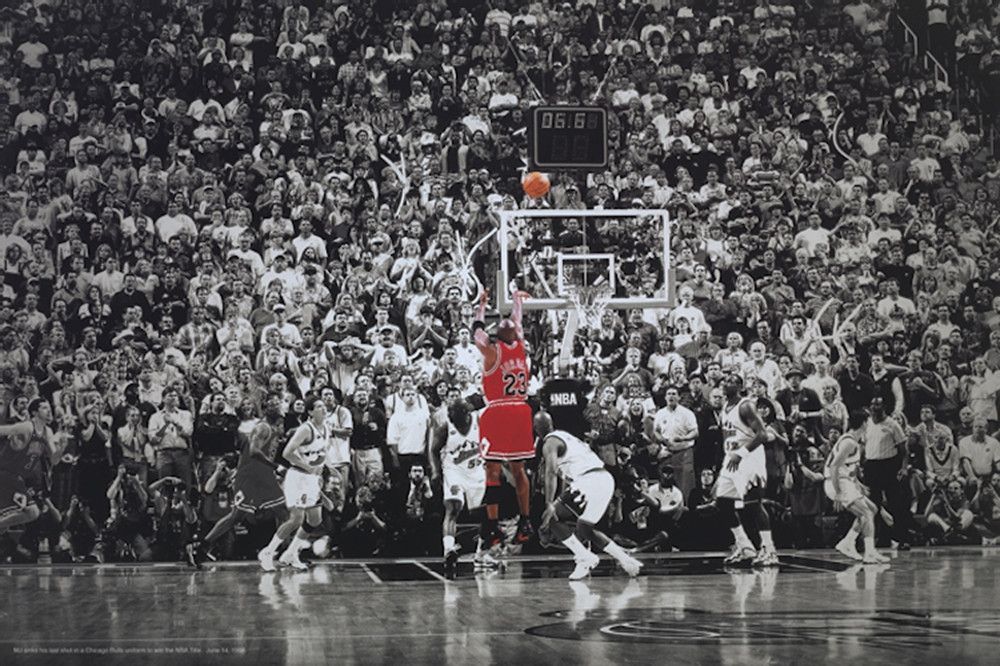
I don't think I had a chance to get into the VTB United League and play fully there, to be a first-team player. Especially at the time. Now, looking back, I think it was worth going to Superleague-1 and gaining playing experience there. It would become clear how competitive I am, and start from this. It would be good if he showed himself - maybe he would have received an offer from the United League.
In general, I think that it is wrong for young players to immediately sign up for the United League. Too difficult. Without playing practice, a young player will not grow. Training is training, but in training alone you will not rise to the top level.
At the pre-season training camp, when we went to Croatia with the Wings, I played for 15 minutes, but in the pre-season everyone was allowed to play... And before the season, I didn’t endure it then, in 2014, I got injured, tore my cruciate ligament. Again, from a great desire: he worked seven days a week, as they say, for wear and tear - this affected.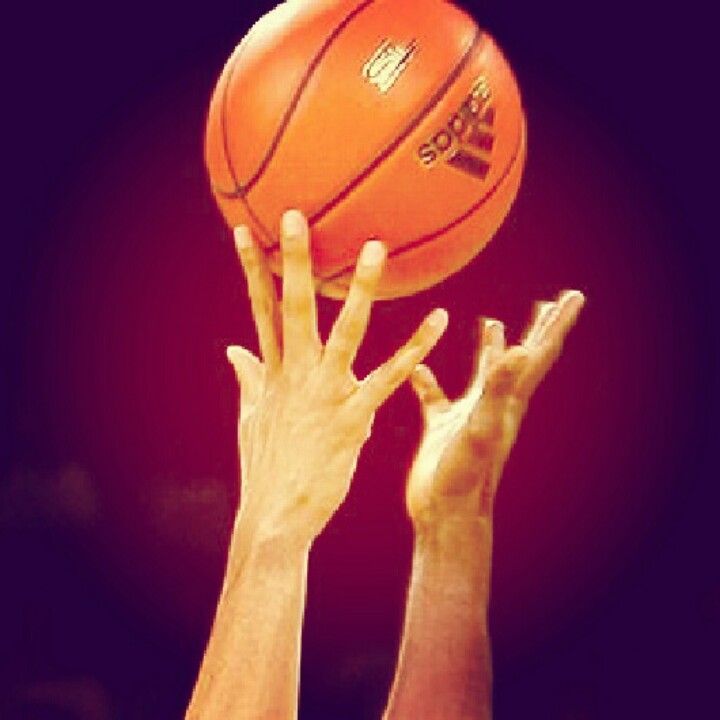
Of course, I wanted to play in the United League. Like any youth player. And I wanted to sign for a club from the United League, at that time not yet understanding all the difficulties. Now, if I met such a player, I would advise him to go to the Super League first. But that's just my opinion.
"As soon as I arrived in Dublin, I was offered to open a can of Guinness." The guy from Perm started his professional career in Ireland
- But then, playing in Superleague-2, you showed impressive statistics: 15 points and 5 assists per game. Why didn't you manage to level up?
- Apparently, they didn't see any prospects for me in Superleague-1. Every summer, finishing the season with good statistics, I asked the agent to look for options in Superleague-1. But if they appeared, something went wrong ... Plus, after the injury, I began to play defense weaker. In the youth team, I felt that I could defend myself against any opponent.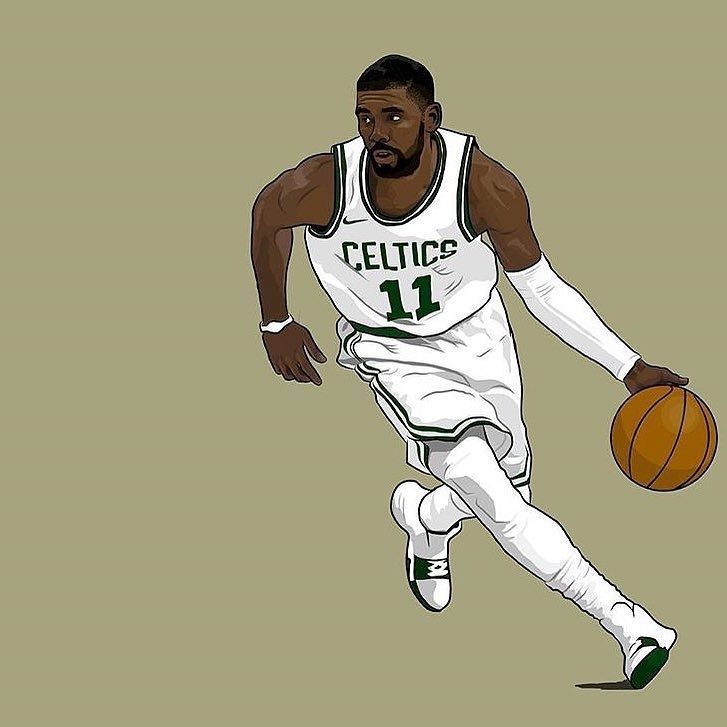 Why it disappeared later, I don’t know, but I didn’t have enough strength to defend myself the whole game. And the focus shifted to the attack, I wanted to score more. In the youth team, I was a point guard, but I went to the Super League and became an attacking defender. But the percentage of implementation was low. This is what I see now.
Why it disappeared later, I don’t know, but I didn’t have enough strength to defend myself the whole game. And the focus shifted to the attack, I wanted to score more. In the youth team, I was a point guard, but I went to the Super League and became an attacking defender. But the percentage of implementation was low. This is what I see now.
- In the first half of the 2017/2018 season, you play in Barnaul, have 18.5 points, 4.8 rebounds and 5.6 assists per game on average, but suddenly you disappear for a month. You finish the season already in Cheboksary, but the statistics are much more modest...
- This is about the fact that there is little professionalism in Superleague-2. There are, of course, teams where people are very good at what they do, but basically... The president of the club has changed in Altaibasket, and the new one wanted to cut my salary. I decided to leave, I had an offer from Irkut, who played in Superleague-1, but the president of Altaibasket did not let me go for a long time.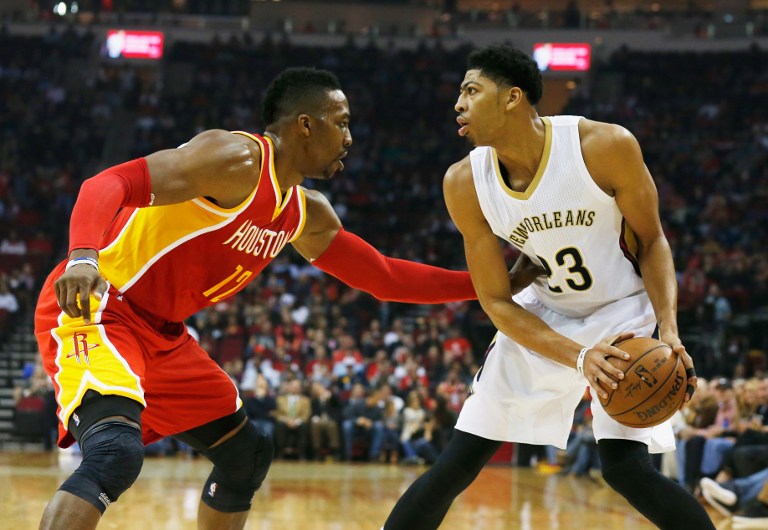 And when he did let go, another player was already taken in Irkutsk. And I sat at home for a month... With these statistics. The question was about finances: there were Superleague-2 clubs that offered me a contract, but I did not want to go on their terms. In the middle of the season it is very difficult to find a good contract, because almost all clubs have already distributed the budget at the beginning of the season.
And when he did let go, another player was already taken in Irkutsk. And I sat at home for a month... With these statistics. The question was about finances: there were Superleague-2 clubs that offered me a contract, but I did not want to go on their terms. In the middle of the season it is very difficult to find a good contract, because almost all clubs have already distributed the budget at the beginning of the season.
As a result, I went to Cheboksary drooping: you try hard, you prove something, but you turn out to be useless... It affects morally, motivation disappears. And in Cheboksary, I did not show the basketball that I could. I started the next season in Tobolsk - and that's all ... I understood: Tobolsk, what to do here? .. I played for six months - and finished. I just didn't see the point in being there. And here it’s not only a question of finances, but also in the future: you won’t run all your life in Super League-2, sometime you need to finish with sports. I understood that I would not get into Superleague-1, where you can get normal money and also enjoy basketball.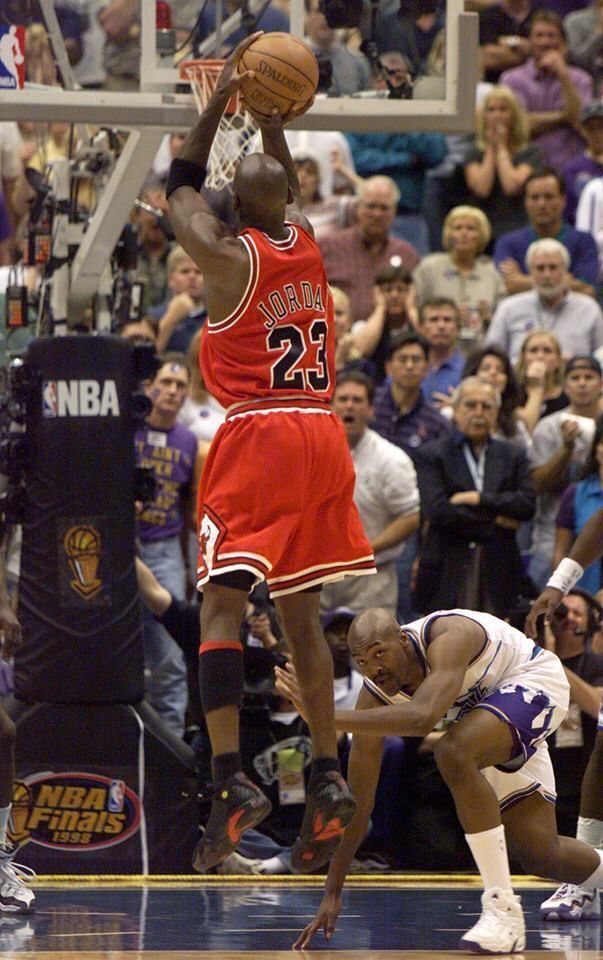 And I decided not to pull up to 35 - but to finish at 27. And start developing in a different direction.
And I decided not to pull up to 35 - but to finish at 27. And start developing in a different direction.
- Back to the invitation to the 3x3 team. Was it a new chance for you to prove yourself in basketball - or is it more entertainment?
- I wouldn't call it a chance. Rather, it is an opportunity for development. If I lost interest in “ordinary” basketball, then “streetball” is still very interesting to me. From this I repulsed. And then we'll see where this path leads.
- The next "stop" in a couple of days - the Cup of Russia. What can the team expect in this tournament?
- You can count on everything - it all depends on how we play ourselves. The lack of experience will need to be compensated by dedication on every piece of the site. There will be many teams at the Cup - 36 participants. For us, the most important thing will be not to fall into the mud face, first of all, in front of ourselves. We will give ourselves completely to the game and see what the result will be.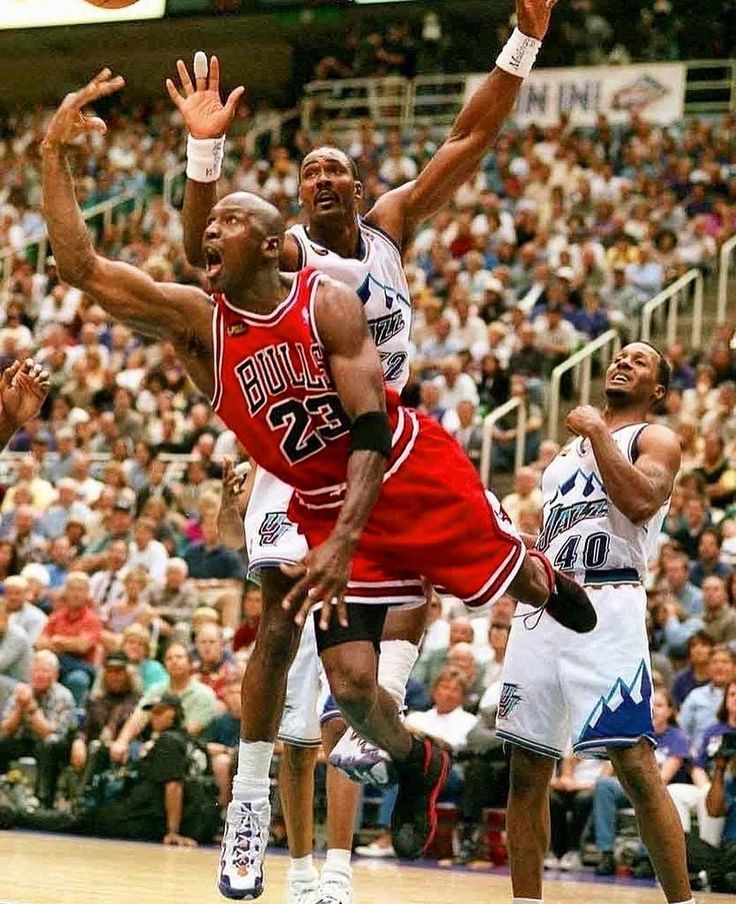 Thinking of something is difficult: as we have already said, in 3x3 basketball, anyone can beat anyone. In terms of composition, we should probably be in the top seven, but in fact ... It may turn out that we will be beaten twice in the group - and we will not go anywhere.
Thinking of something is difficult: as we have already said, in 3x3 basketball, anyone can beat anyone. In terms of composition, we should probably be in the top seven, but in fact ... It may turn out that we will be beaten twice in the group - and we will not go anywhere.
We went to Kursk for the European United League without thinking anything: we went to play, to fight - and already the first round showed that we can do it. We reached a strong team, Skolkovo, in the semi-finals, lost a little to it, although I think we could have won. This experience needs to be embraced.
Our team is different because we believe in each other. There is no division into the leader and the rest, there is no negativity, and this helps a lot. I believe in every throw of every guy. And if someone made a mistake, no one will shout at him, because this will not lead to anything good.
I think we will return from the Cup in a good mood. I have such a feeling.
- You already mentioned Gagarin and Skolkovo. Are there teams in 3v3 basketball whose style you particularly like?
Are there teams in 3v3 basketball whose style you particularly like?
- I really like the "Three Stars" who recently came to us at the Samara Open, and just "Gagarin". I like it when people play without unnecessary emotions: they calmly go out and do their job. I mean negative emotions. Skolkovo, for example, always has a lot of emotions: in the direction of the judges, in the direction of other teams - I think this only gets in the way. Psychologically stable teams, which I like "Three Stars" and "Gagarin", at any score, even losing 10 points, they will play their game without falling into some chaotic three-pointers - and sometimes this happens with our team, yes and in general interferes with many teams. I would not say that someone stands out from them individually - but they should be noted for teamwork.
- Speaking in general about the development of 3x3 basketball in Samara and Russia, what can be highlighted? In Kursk, for example, judging by the broadcast, everything was organized in such a way that many Superleague-1 clubs could not even dream of.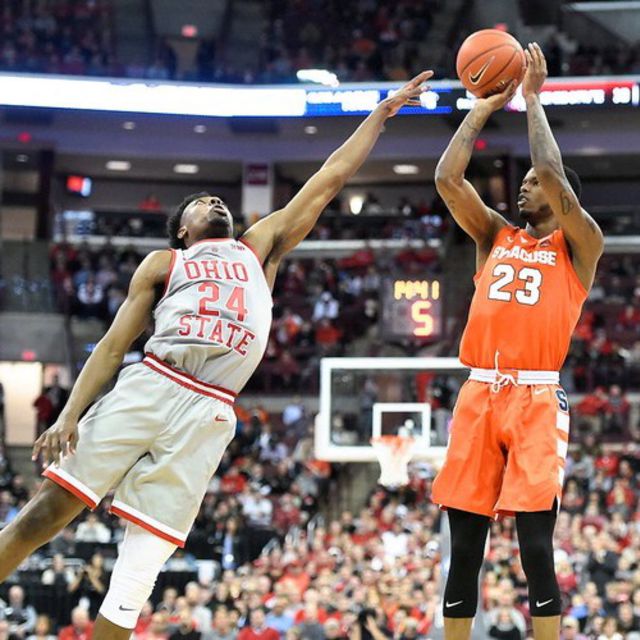 ..
..
- In just two or three years, 3x3 basketball has turned into a completely different sport. This is no longer "street" basketball. This is a professional sport. You can't, like before, go out, play and come back home. People are trying to organize. If we take the United League of Europe in Kursk, I have never seen anything like this before! It can be seen that people are seriously "sick" of this business, "confused" - and it turned out very cool! As Sergei Fomin (President of the United League of Europe 3x3 - author's note) told us, as soon as the photos of the playing hall appeared, he received calls from KHL clubs with questions and for advice. In Kursk, the emptiness of the stands was "removed" with the help of huge vertical banners - it looked great. And the fact that the organizers of the 3x3 tournament are receiving calls from the KHL is also an indicator of the current level of this sport. I love it. And there is still room for improvement.
Photo: BC Samara, European United League 3x3, BC Altaibasket
Say YES to sports! - Choose your favorite sport
Basketball
The earliest evidence of a game reminiscent of modern basketball is found in the ancient civilizations of South and Central America: these are walled playgrounds and stone rings, fortified at some height from the ground.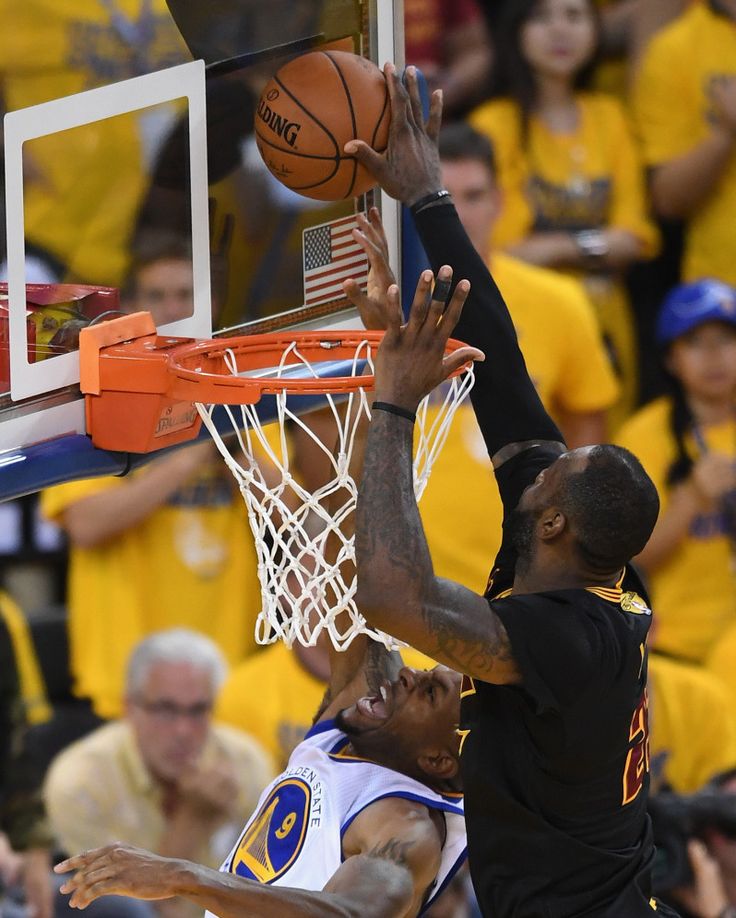 As well as documents - codes, where there are references to the ball game. The playgrounds are decorated with sculptures of the gods, because the game was not just a sporting event, but also part of a religious holiday. Unlike modern basketball, players pushed the ball with their hips and knees. And the ball itself was solid, rubber. The game was considered so honorable that even kings took part in it.
As well as documents - codes, where there are references to the ball game. The playgrounds are decorated with sculptures of the gods, because the game was not just a sporting event, but also part of a religious holiday. Unlike modern basketball, players pushed the ball with their hips and knees. And the ball itself was solid, rubber. The game was considered so honorable that even kings took part in it.
A basketball-like game was played in Florida in the early 19th century. Opponents sought to throw the ball into the basket, fixed at the top of the pole, as often as possible.
And the honor of inventing modern basketball belongs to the teacher of one of the American colleges James Naismith. He was asked to come up with a game that was not as dangerous as American football and suitable for indoors. In winter, everyone is tired of doing gymnastics alone. Basketball, invented by Naismith, was different from the modern one. The number of participants on the site could be anything - from 6 to 50.![]() And the ball was first thrown into cardboard fruit boxes nailed to the base of the stands.
And the ball was first thrown into cardboard fruit boxes nailed to the base of the stands.
Basketball appeared in Russia at the beginning of the 20th century.
About the events of a whole century of basketball history, about the rules of the game, famous athletes can be found in these books:
1. Basketball [Text] / [res. ed. O. Usoltseva]. - M. : Eksmo, 2013. - 55, [1] p. : ill. - (Sports Encyclopedia; [T. II]).
2. Popular sports history [Text] / Evgeny Gik, Ekaterina Gupalo. - M.: Academy, 2007. - 448 p. : ill. - (Popular sports history).
3. Encyclopedia for children. T. 20. Sport [Text] / ch. ed. V. Volodin. - M. : Avanta +, 2001. - 624 p. : ill. - (Encyclopedia for children Avanta +).
And this is not a complete list of literature about basketball, which can be found in the Tambov Regional Children's Library.
Volleyball
In which game is it not necessary to drive the ball into the goal or the basket, but it is enough to make sure that it does not touch the ground? Correctly. This is volleyball. The Japanese claim that a similar game has been known to them for more than three centuries.
This is volleyball. The Japanese claim that a similar game has been known to them for more than three centuries.
However, most athletes consider William Morgan, a physical education teacher at one of the American colleges, to be the father of volleyball. It is believed that he suggested that students throw an inflated rubber bladder through a fishing net. Soon he was surprised to find that they were exchanging passes with obvious excitement. Then the teacher himself took a place on the playground and immediately after the lesson developed the rules of the game. It was at the end of the nineteenth century. The game was called "volleyball", which means "flying ball" in English. Not only the Japanese, but also American firefighters argue with this version of the origin of volleyball. According to them, it was the representatives of their profession who first came up with the idea of throwing an inflated camera over a stretched rope.
In Russia, the first volleyball teams appeared in the 1920s. XX century ... in Moscow theaters! People's artists and artists enthusiastically threw the ball over the net. Going on tour, they now demonstrated not only their stage talents, but also a new game.
XX century ... in Moscow theaters! People's artists and artists enthusiastically threw the ball over the net. Going on tour, they now demonstrated not only their stage talents, but also a new game.
Read the continuation of the volleyball history in the books of the Tambov Regional Children's Library:
1. Popular sports history [Text] / Evgeny Gik, Ekaterina Gupalo. - M.: Academy, 2007. - 448 p. : ill. - (Popular sports history).
2. Furmanov, A. G. Volleyball on the lawn, in the park, in the yard [Text] / A. G. Furmanov. - 2nd ed., corrected. and additional - M.: Physical culture and sport, 1982. - 104 p. : ill.
3. Furmanov, G. A. Play mini-volleyball [Text] / G. A. Furmanov. - M.: Sov. sport, 1989. - 48 p. : ill. - (Physical education b - chka schoolchild).
4. Encyclopedia for children. T. 20. Sport [Text] / ch. ed. V. Volodin. - M. : Avanta +, 2001. - 624 p. : ill. - (Encyclopedia for children Avanta +).
Figure skating and speed skating
Where and when the first skates appeared is not exactly known.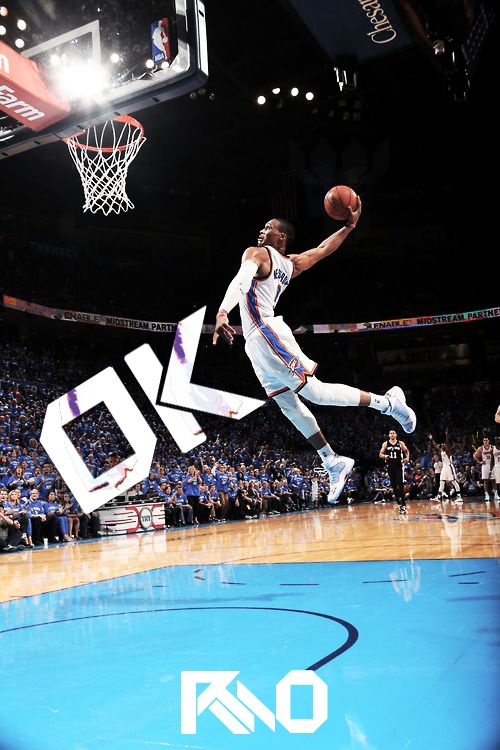 In Kazakhstan, archaeologists have found six bone skates, which are over 2,000 years old. Similar skates are on display at the British Museum. Two holes are burned in their lower part - to tie the skate to the toe of the shoe. At the “heel”, the bone is almost not processed, except for one large hole - a belt was passed through it. In Russia, Peter I ordered to rivet skates to boots. He spied this idea in Holland. Elongated skates, which became the prototype of cross-country skates, were made by a Russian runner, a servant of the Nikolaev railway, Alexander Panshin. And the world's first skating club appeared in England.
In Kazakhstan, archaeologists have found six bone skates, which are over 2,000 years old. Similar skates are on display at the British Museum. Two holes are burned in their lower part - to tie the skate to the toe of the shoe. At the “heel”, the bone is almost not processed, except for one large hole - a belt was passed through it. In Russia, Peter I ordered to rivet skates to boots. He spied this idea in Holland. Elongated skates, which became the prototype of cross-country skates, were made by a Russian runner, a servant of the Nikolaev railway, Alexander Panshin. And the world's first skating club appeared in England.
Figure skating on ice originated in Holland. There are many water channels in this country. In winter, they freeze, and there comes expanse for skaters. But at first they competed in the same competitions as skaters and did not skate at all “figuratively”. Until one day, US choreographer and lover of ice walks Jackson Haynes tried to perform popular dances on skates to music. He immediately had many students.
He immediately had many students.
And in 1872, the first official figure skating competitions were held in Vienna, the capital of Austria.
List of literature to help the young figure skater and skater:
1. Afonkin, S. Yu. History of the Olympic Games [Text] / S. Yu. Afonkin. - St. Petersburg. : Balt. book. company, 2013. - 77, [3] p. : ill. - (Learn the world. History). - Aut. listed at the end of the book.
2. Wimmert, J. Olympic Games [Text] / J. Wimmert, T. Handshin, M. Steinbrecher; ill. D. Costa, W. Buffler; per. with him. E. Yu. Zhirnova. - M. : Mir knigi, 2007. - 48 p. : ill. - (Why and why). - Aut. on the region not specified.
3. Popular sports history [Text] / Evgeny Gik, Ekaterina Gupalo. - M.: Academy, 2007. - 448 p. : ill. - (Popular sports history).
4. Extreme sports [Text] / Robert Cope; [per. from English. A. V. Tikhonov]. - M. : Makhaon, 2009. - 32 p. : ill. - (I love to read! : Level 4). - Aut. listed at the end of the book.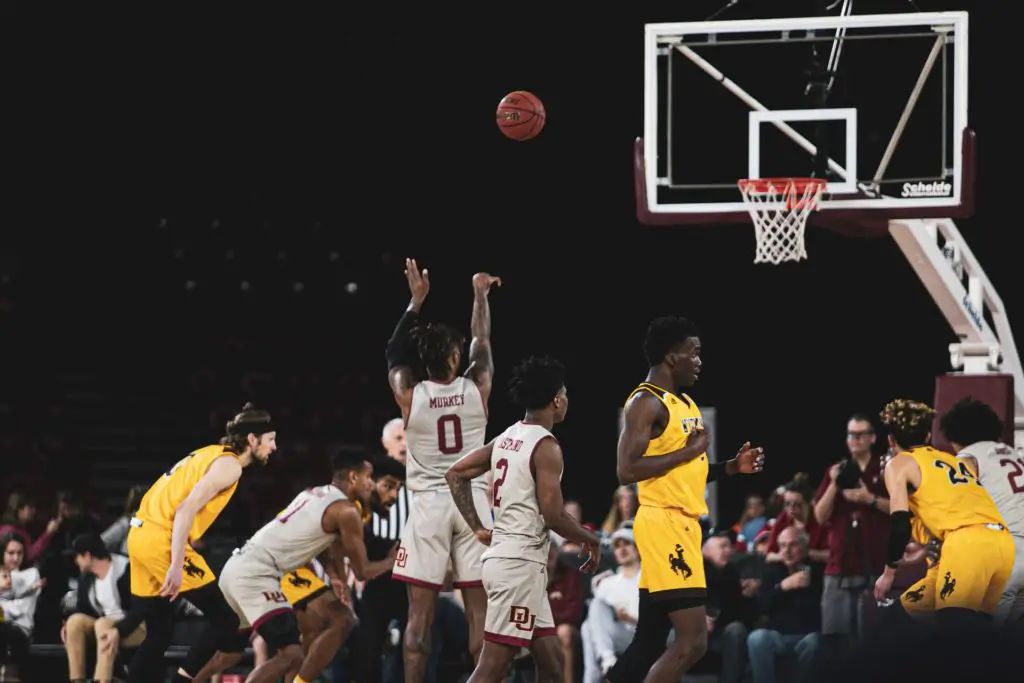
5. Encyclopedia for children. T. 20. Sport [Text] / ch. ed. V. Volodin. - M. : Avanta +, 2001. - 624 p. : ill. - (Encyclopedia for children Avanta +).
Read more about other winter sports, as well as about what athletes have achieved outstanding results in them, and about the most interesting incidents at competitions and olympiads, read in the books of the Tambov Regional Children's Library.
Skiing
Most countries of the world know the change of seasons. Russia, America, Europe and Asia experience hot summers and snowy winters. And I want to go in for sports and play outdoor games all year round. Therefore, there are winter and summer sports. Everyone loves to ski, ride downhill or play tag on skates. And professional athletes have the opportunity to show their skills at sports competitions. Winter sports include: ice hockey, figure skating, speed skating, luge and skiing (alpine skiing, Nordic biathlon, freestyle, snowboarding), biathlon, bobsleigh, curling and others. How and when did they appear? Take, for example, skis.
How and when did they appear? Take, for example, skis.
Once upon a time, an ancient hunter, chasing prey, got stuck in the snow. With difficulty pulling his foot out of the snowdrift, he stepped on a piece of pine bark lying nearby and ... did not fail. So, perhaps, the first skis appeared. They greatly simplified the life of the northern peoples. In 1444, the Grand Duke of Moscow Vasily II sent a ski army against the Tatars. Russian soldiers on "mouths" (Old Russian skis) defeated the enemy cavalry bogged down in the snow. Russian Cossack explorers under the command of Yerofey Khabarov in the 17th century mastered the Far East on skis. And the first professional skiing competitions were held in Norway in the 60s. XVIII century. You can read about the further triumphal procession of skiing in books from the collection of the Tambov Regional Children's Library:
1. Afonkin, S. Yu. History of the Olympic Games [Text] / S. Yu. Afonkin. - St. Petersburg. : Balt. book. company, 2013. - 77, [3] p. : ill. - (Learn the world. History).
- 77, [3] p. : ill. - (Learn the world. History).
2. Wimmert, J. Olympic Games [Text] / J. Wimmert, T. Handshin, M. Steinbrecher; ill. D. Costa, W. Buffler; per. with him. E. Yu. Zhirnova. - M. : Mir knigi, 2007. - 48 p. : ill. - (Why and why).
3. Minenkov, B. V. Skiing and health [Text] / B. V. Minenkov, E. M. Sobol. - M.: Physical culture and sport, 1981. - 80 p. : ill. - (Physical education and health).
4. Extreme sports [Text] / Robert Cope; [per. from English. A. V. Tikhonov]. - M. : Makhaon, 2009. - 32 p. : ill. - (I love to read! : Level 4).
5. Encyclopedia for children. T. 20. Sport [Text] / ch. ed. V. Volodin. - M. : Avanta +, 2001. - 624 p. : ill. - (Encyclopedia for children Avanta +).
Read more about other winter sports, as well as about what athletes have achieved outstanding results in them, and about the most interesting incidents at competitions and olympiads, read in the books of the Tambov Regional Children's Library.
Football
Football is a game that is loved all over the world. I wonder when and where the first match took place? No one can accurately answer this question. The first mention of kicking with a ball dates back to Ancient China. Three thousand years ago, the game Tsu Chu (“push with your foot”) was invented there, which was part of the compulsory training program for soldiers. In one of the Chinese caves, the oldest image of a football player has been preserved.
In ancient Greece and Rome, they also liked to run after the ball. However, the rules of the game were different from the football ones we are used to. It was a real "battle for the ball", which was reminiscent of modern rugby.
Games similar to football were known in Europe during the time of the knights, but the players were not warriors, but artisans and peasants. They played with a leather ball stuffed with straw. The ball could be kicked with the feet and thrown with the hands. Such games were often forbidden, because there were no referees, referees and red cards yet, and sports competitions often ended in quarrels and fights.
Such games were often forbidden, because there were no referees, referees and red cards yet, and sports competitions often ended in quarrels and fights.
England is considered to be the birthplace of modern football. And the best footballers of our day were born in Portugal and Argentina.
You will learn more about the history of football, international tournaments, the rules of the game and the most famous football players from books in the Tambov Regional Children's Library. You will also read about what dribbling is, a twisted shot, what is the most difficult rule, what a referee should do and much more.
List of young footballer's help books:
1. Zavarov, A. Football for beginners [Text]: basics and rules / Alexey Zavarov. - M.; SPb. ; N. Novgorod: Peter, 2015. - 190, [2] p.
2. Kotyatova, N. I. Football [Text] / N. I. Kotyatova; [art. V. G. Chelak]. - M. : ROSMEN, 2013. - 95, [1] p. : ill. - (Children's encyclopedia ROSMEN) (The best - for children). - Aut. listed at the end of the book.
- Aut. listed at the end of the book.
3. Malov, VI I know the world. Football [Text]: children. encycle. / V. I. Malov; artistic V. N. RODIN. - M. : AST : Astrel, 2006. - 395 p. : ill. - (I know the world). - Aut. listed on the back of tit. l.
4. Moskalenko, R. V. Football [Text]: sports. encycle. / R. V. Moskalenko. - M. : Eksmo, 2012. - 63, [1] p. : ill. - (Sports Encyclopedia; Vol. I). - Aut. listed at the end of the book.
5. Petri, H. Football [Text] / H. Petri. - M.: Astrel: AST, 2002. - 64 p. : ill. - (Everything about everything). - Aut. listed on the back of tit. l.
And this is not a complete list of literature about football, which can be found in the Tambov Regional Children's Library.
Hockey
Hockey is one of the most popular and spectacular games, always attracting spectators and fans. The word "hockey", according to one of the most common versions, goes back to the old French "hoquet", which meant a shepherd's crook with a hook.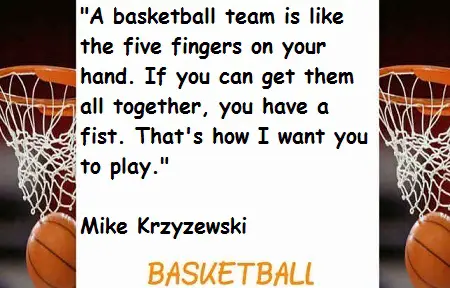 There are many varieties of hockey. One of them is field hockey. This is a very old sport. Similar games existed in ancient Egypt, Japan, Greece and the Americas. Modern field hockey originated in Great Britain in the 19th century.
There are many varieties of hockey. One of them is field hockey. This is a very old sport. Similar games existed in ancient Egypt, Japan, Greece and the Americas. Modern field hockey originated in Great Britain in the 19th century.
Bandy has an equally ancient history. For example, in Russia there were games with clubs and balls: cauldron, clubs, head over heels, tops. Similar games existed in Europe. Curling is in Ireland, Colv is in Holland.
But the most popular is Canadian ice hockey. At the end of the 19th century, a rubber puck appeared and the modern rules of this game appeared. In the modern world, teams from Russia and Canada are considered the strongest. You can get acquainted with the history of games, read interviews with famous domestic hockey players, learn about the rules of the game and hockey equipment in the Tambov Regional Children's Library. Books-assistants of a young hockey player:
1. Krasnobelmov, A. V. I know the world. Hockey [Text]: encyclopedia. / A. V. Krasnobelmov; artistic Yu. A. Stanishevsky; under total ed. E. M. Ivanova. - M. : AST : Astrel, 2003. - 397 p. : ill. - (I know the world). - Aut. listed on the back of tit. l.
/ A. V. Krasnobelmov; artistic Yu. A. Stanishevsky; under total ed. E. M. Ivanova. - M. : AST : Astrel, 2003. - 397 p. : ill. - (I know the world). - Aut. listed on the back of tit. l.
2. Tretyak, V. A. Tips for a young goalkeeper [Text]: book. for students / V. A. Tretyak; foreword A. V. Tarasova. - M.: Education, 1987. - 95 p. : ill. - (Sport in your life).
3. Hockey [Text] / [res. ed. O. Usoltseva]. - M. : Eksmo, 2014. - 63, [1] p. : ill. - (Sports Encyclopedia; [T. IV]).
4. Hockey for beginners [Text] / G. P. Mikhalkin. - M: Astrel: AST, 2005. - 141 p. : ill. - (Sport).
Read more about other winter sports, as well as about what athletes have achieved outstanding results in them, and about the most interesting incidents at competitions and olympiads, read in the books of the Tambov Regional Children's Library.
Chess
What games can you play? In the most different. Maybe even chess. Parents taught. How often do you win? After reading our books, you can even beat your dad. Of course, if he is not a professional player, he is a grandmaster.
How often do you win? After reading our books, you can even beat your dad. Of course, if he is not a professional player, he is a grandmaster.
First, we will briefly get acquainted with this ancient game. Chess appeared 2000 years ago in one beautiful eastern country - India. The mysterious name of this game is translated very simply. "Shah" is the King and "Checkmate" is the end. Together, it turns out "The End of the King." This game was originally not peaceful at all. The local Shah-Padishah put the pieces on the chessboard, and the game helped him think over the plan for the future battle. Of course, you need a partner to play chess. Therefore, the shah often offered to play a game or two to the kings and nobles who came to him. Many of them were rulers of foreign states. So chess spread all over the world. But what happened next and how to play this tricky game can be found in books:
1. Bondarevsky, I. Z. Learn to play chess [Text] / I. Bondarevsky; ed. A. K.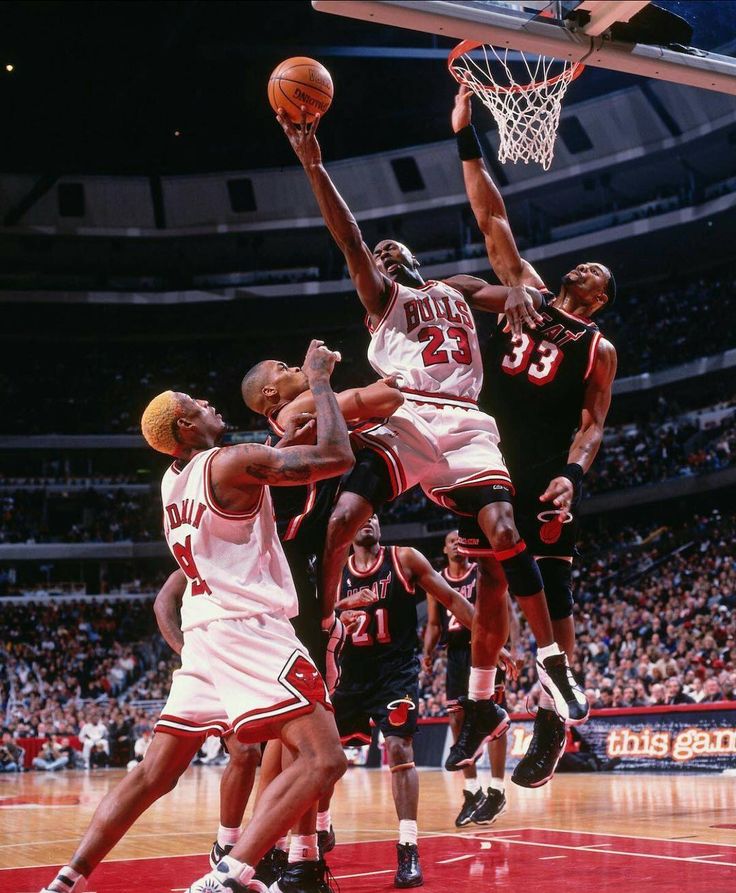 Tolusha. - L.: Lenizdat, 1966. - 80 p. : ill.
Tolusha. - L.: Lenizdat, 1966. - 80 p. : ill.
2. Geek, E. Ya. Conversations about chess [Text]: book. for students / E. Ya. Gik. - M. : Education, 1985. - 160 p. : ill. - (Sport in your life).
3. Grishin, VG Kids play chess [Text]: book. for the teacher of children garden: from work experience / V. G. Grishin. - M. : Education, 1991. - 158 p. : ill.
4. Ilyin, E. I. In the country of wooden kings [Text]: for preschools. age / E. Ilyin; artistic B. Malinkovsky. - M. : Malysh, 1985.
5. Kostrov, VV This book will teach children and parents to play chess [Text] / VV Kostrov. - St. Petersburg. : Litera, 2013. - 128 p. : ill.
6. Petrushina, NM Chess textbook for children [Text] / Natalia Petrushina. - 14th ed. - Rostov n / a : Phoenix, 2014. - 221, [3] p. : ill. - (Chess). - Aut. listed on tit. l.
7. Sukhin, IG Chess for the little ones. Chess for children [Text]: book-tale for joint. readings of parents and children: ed. teaching methodology / I.